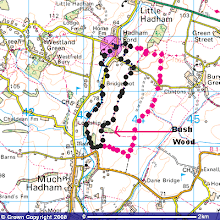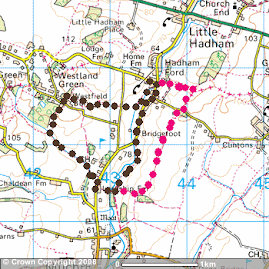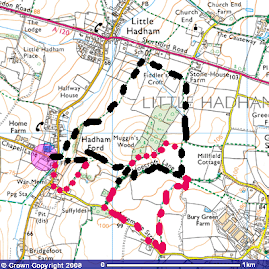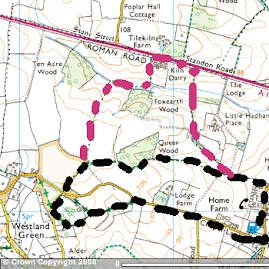Having treated myself to a new camera body, a 2nd hand Nikon D2x, a monster of a machine, I was keen to get to Norfolk to begin learning how to use it successfully. Leaving at 5.45 I stopped off at Lyndford Arboretum to check for the 2 barred crossbills that are still reported as present. No sign, but good numbers of common crossbills, nuthatches and siskins. Then, off to Wells Woods, parking in the beach car park just past Pinewoods caravan site. To start with I took photos of any bird, beginning with this cormorant on the boating lake. A little later, a redwing, distant, drinking at a puddle. 2 female crossbills came down to drink, but a dog walker flushed them before I had the camera ready.
 |
| cormorant |
.JPG) |
| redwing |
There were quite a few birders checking the woods, but nothing was being reported. However, along with large numbers of redwings, there appeared to be blackcaps and blackbirds every 10 yards. A particularly pleasing female blackcap photo, taken through leaves from the footpath. With my previous D40 this would have been very difficult to get due to the focusing set up. However, the new camera permits very precise focus and so I could get on to the bird, rather than focusing on the nearer leaves.
 |
| female blackcap |
Not too much else seen and I had missed the 4 flyover glossy ibis that headed west between Brancaster and Happisburgh so Off to Garden Drove just east of Wells.
Here, after a muddy drive down the track, I came across the first yearlister of the day; a male ring ouzel on the concrete at the end of the track. Unable to get a photo as I was still in the car. The bird flew off into the adjacent stubble field, not to be refound. A walk down to Warham Greens gave views of brambling, chaffinch, chiffchaff and more blackbirds and redwings but no rarities so I returned to the car. Another birder confirmed he, too had not seen anything out of the ordinary. I headed off to Cley, checking the hides first before a wander around to the beach carpark.
Not too much from the 3 centre hides, but a good opportunity to test the camera and adjust the settings. A selection of results here in what was becoming fading light.
.JPG) |
| lapwing/peewit/green plover. |
.JPG) |
| lapwings and wigeon |
.JPG) |
| take off |
.JPG) |
| shelduck |
.JPG) |
| female shoveler |
.JPG) |
| 3 shoveler and teal |
.JPG) |
| pair of teal |
At the beach carpark I noted 100+ brent geese in the Eye Field before I set up for a sea watch. Gannets and gulls were ever present but eventually I caught on a small bird on the water some way out. A grey phalarope. 2 others got on to it but it was difficult to describe its whereabouts as there were no lobster pot buoys etc to guide other sea watchers. Flocks of common scoter headed west. In one, flashes of white wingbars signalled my 3rd year lister of the day: velvet scoter, the 2nd being the phalarope. By this time the light was very poor, heavy overcast conditions. A marsh harrier ventured over the reserve and surprisingly everything went up so maybe a peregrine had made a move as birds were distracted by the harrier. I have noted this before, where a peregrine fires into a flock of rising birds concerned by the harrier. Watched a wigeon hit this way at Old Hall Marshes several years ago. Very spectacular.
.JPG) |
| brent geese |
.JPG) |
brent goose
|
A coffee and some bread buns filled with my standard fare for Norfolk: double gloucester and chorizio and I was good for a trip to Titchwell before the drive home. Here, bramblings were on the feeders, but too dark for a worthwhile shot along with usual daylisters like greenfinch, tits, thrushes etc. Several siskins called from the trees around the centre. The beach path was full of birders, but again, not too much on view. A stonechat on Thornham Marsh and, I suspect, in excess of 5000 golden plover on the Fresh Marsh. Usual waders: snipe, redshank, dunlin, ruff, and 100's pf teal and wigeon. I carried on for another beach watch where good waders were added to the list; black and bar tailed godwit, oystercatcher, curlew, sandering, a flyover grey plover + more scoter out to sea. 2 sandwich terns headed east. Several skua sp were called but all I saw were juvenile lesser black backed and herring gulls. Gannets were loafing around and a very distant shearwater remain unidentified.
.JPG) |
| Titchwell chiffchaff |
.JPG) |
| chiffchaff |
 |
| teal |
 |
| wigeon |
.JPG) |
| migrant hawkers |
.JPG) |
| common darter |
.JPG) |
| female migrant hawker |
 |
| teal |
 |
| wigeon |
 |
| gadwall |
 |
| little egret |
 |
moorhen
|
So, with the time approaching 6.30, I set off for home with over 170 photos. Once deleted they were reduced to 40, some of which I share here. Not great, but some pleasing clarity and with some, good sharpness. The ones at Titchwell had light compensation going on as it really was very poor conditions. The chiffchaff, as they are prone to do, would not stay still, so please to fire off a couple that captured the bird reasonably well.
The 3 year listers take my annual total to a respectable 203, still 15+ to get and with a day at Dungeness and then the following day at Sandwich bird obs, should be able to get these.


.JPG)
.JPG)
.JPG)
.JPG)

.JPG)
.JPG)


.JPG)
.JPG)
.JPG)

.JPG)


.JPG)
.JPG)
.JPG)
.JPG)
.JPG)
.JPG)
.JPG)
.JPG)
.JPG)
.JPG)
.JPG)
.JPG)
.JPG)



.JPG)
.JPG)
.JPG)
.JPG)
.JPG)
.JPG)
.JPG)
.JPG)








.JPG)

.JPG)
.JPG)
.JPG)
.JPG)
.JPG)
.JPG)
.JPG)
.JPG)
.JPG)
.JPG)
.JPG)


.JPG)
.JPG)
.JPG)
















































